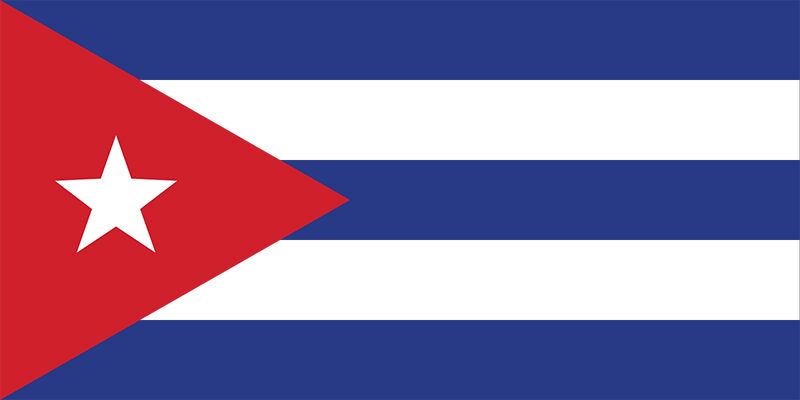
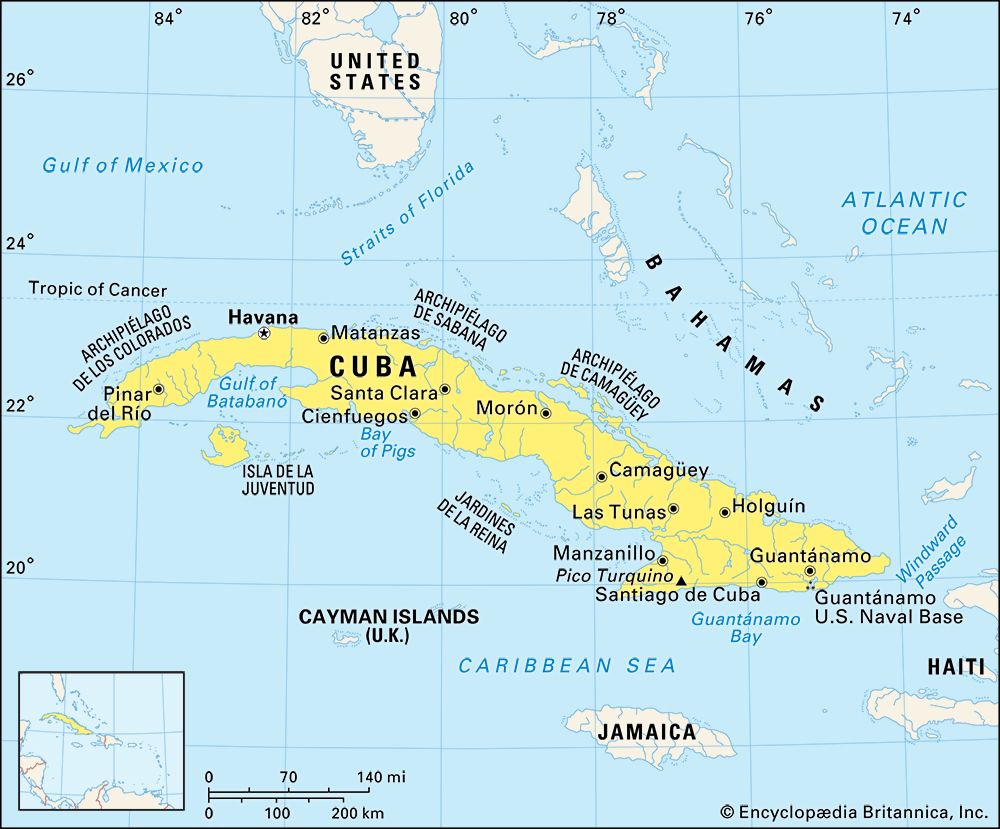 National anthem of CubaThe island of Cuba has seen many changes since being spotted by Christopher Columbus in 1492. It became known worldwide for its sugar industry but often had an unstable economy. In the 1900s Cuba was involved in several national and international conflicts. Many of those concerned the country’s ties to the political and economic system known as communism.
National anthem of CubaThe island of Cuba has seen many changes since being spotted by Christopher Columbus in 1492. It became known worldwide for its sugar industry but often had an unstable economy. In the 1900s Cuba was involved in several national and international conflicts. Many of those concerned the country’s ties to the political and economic system known as communism. 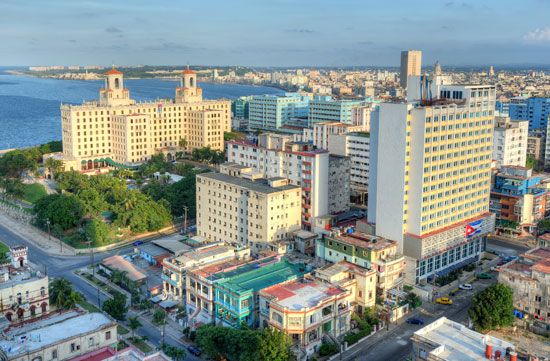 The capital is Havana.
The capital is Havana.
Cuba lies in the Caribbean Sea, about 90 miles (145 kilometers) south of Florida. The country includes a long, narrow main island and about 2,000 smaller islands. The majority of Cuba is made up of plains. 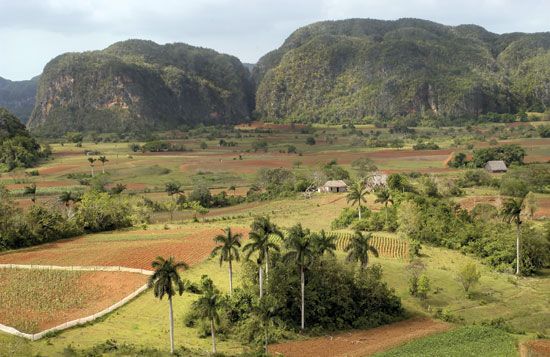 Mountains and hills cover about a quarter of the main island. Cuba is warm year-round. Hurricanes sometimes hit the country in the summer and fall, during the rainy season.
Mountains and hills cover about a quarter of the main island. Cuba is warm year-round. Hurricanes sometimes hit the country in the summer and fall, during the rainy season.
About one-third of Cuba’s people are white, many with a 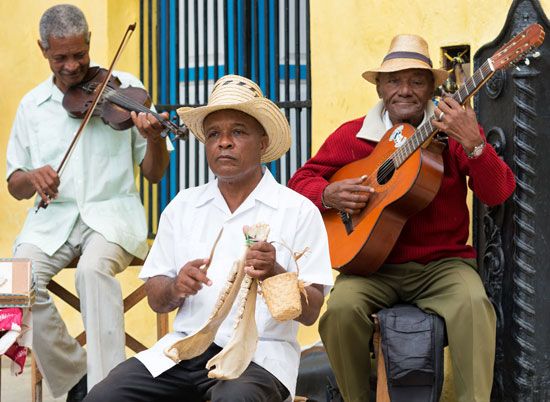 Spanish background. A smaller number of people are the descendants of African slaves. More than half of all Cubans have mixed white and black roots. Spanish is the main language. Although the government looks down on religion, many Cubans practice Santería (a religion of African origin) or Roman Catholicism. About three-fourths of the people live in cities.
Spanish background. A smaller number of people are the descendants of African slaves. More than half of all Cubans have mixed white and black roots. Spanish is the main language. Although the government looks down on religion, many Cubans practice Santería (a religion of African origin) or Roman Catholicism. About three-fourths of the people live in cities.
Trade, services, and manufacturing are the most important economic activities. Much of the industry in Cuba is related to the country’s agricultural and natural resources. Tobacco and food products are the major manufactured items. Sugar, made from sugarcane grown on large plantations, is Cuba’s main export. Mines provide nickel, and the waters provide fish. Factories also make chemicals, transportation equipment, and nonelectrical machinery.
Christopher Columbus claimed Cuba for Spain in 1492. After the Spanish began settling there in 1511, warfare and disease soon 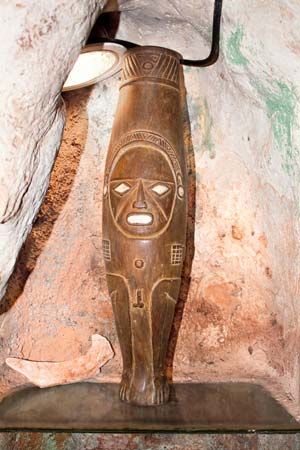 killed the native Taino and Ciboney peoples. The Spanish brought in African slaves to work on sugarcane plantations.
killed the native Taino and Ciboney peoples. The Spanish brought in African slaves to work on sugarcane plantations.
Following the Spanish-American War of 1898, Spain granted Cuba independence. The Republic of Cuba was established in 1902. It suffered from government instability, corruption, and widespread poverty.
In 1959 Fidel Castro overthrew the government and took power. He made Cuba a communist country. Other communist countries, particularly the Soviet Union, gave Cuba their support, and some Cubans hoped that Castro would put an end to the country’s problems. Many Cubans who did not like communism, however, left the country. In 1961 a force of 1,500 people who opposed Castro invaded the Bay of Pigs, southeast of Havana. They tried to capture the island but failed.
Cuba’s relationship with the United States suffered because the United States opposed communism. The United States refused to trade with Cuba. It also threatened Cuba in 1962, when it discovered that the Soviet Union had placed nuclear missiles in Cuba. The event became known as the Cuban Missile Crisis. It ended when the Soviets withdrew the missiles. In 1966 U.S. President Lyndon B. Johnson signed the Cuban Adjustment Act (CAA). The law allowed any Cuban citizen or native (a person born in Cuba) who had been in the United States for more than one year after January 1, 1959, to become a permanent resident. The purpose of the CAA was to try to make Cuba’s communist government weaker while helping Cubans in the United States.
By 1980 the Cuban economy was struggling greatly. Many people in Cuba were unhappy because it was hard to find housing and good jobs. Castro announced he would allow Cubans to immigrate (move) to the United States. In April he opened up the port of Mariel, about 31 miles (50 kilometers) west of Havana. In what became known as the Mariel Boatlift, small boats packed with immigrants crossed the Florida Straits to southern Florida. Over the span of five months, about 125,000 immigrants arrived in the United States. Many of them settled in or around Miami.
In 1991 the Soviet Union collapsed and Cuba lost an important source of support. But Castro remained in power until 2008, when his brother Raúl became president. Raúl made some changes. For instance, he allowed Cubans to purchase cell phones and personal computers. In December 2014, after more than 50 years, it was announced that diplomatic relations between Cuba and the United States were being restored.
In April 2018 Raúl Castro stepped down and was replaced by Miguel Díaz-Canel Bermúdez. It was the first time in almost 60 years that someone from outside of the Castro family led Cuba.




